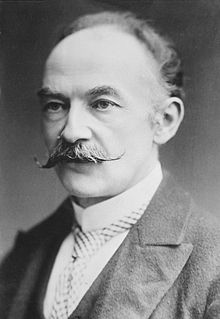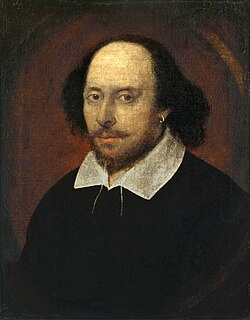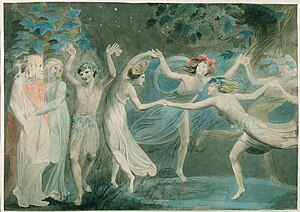>> Boys and Girls
"Boys and Girls" was first published in 1968 in The Montrealer, before it was collected with fourteen other stories and published in Alice Munro's first edition of short stories, Dance of the Happy Shades (1968). The story, narrated by a young girl, details the time in her life when she leaves childhood and its freedoms behind and realizes that to be a "girl" is to be, eventually, a woman. The child begins to understand that being socially typed entails a host of serious implications. Thus becoming a "girl" on the way to womanhood is a time fraught with difficulties for the young protagonist because she senses that women are considered the social inferiors of men. Initially, she tries to prevent this from occurring by resisting her parents' and grandparents' attempts to train her in the likes, habits, behavior, and work of women. This resistance, however, proves to be useless. The girl ends the story clearly socially positioned as a girl, something which she apprehends with some trepidation. The story is thus a feminist parable of sorts, where a girl bucks against a future that will prevent her from doing, socially, whatever she might please. Although most of Munro's work does not have such clear and cogent feminist interest, this story eloquently attests to how women worked during this century to change their social position substantially.
Thomas Hardy, OM (2 June 1840 – 11 January 1928) was an English novelist and poet. A Victorian realist in the tradition of George Eliot, he was influenced both in his novels and in his poetry by Romanticism, especially William Wordsworth. Charles Dickens was another important influence. Like Dickens, he was highly critical of much in Victorian society, though Hardy focused more on a declining rural society.
Most of his fictional works – initially published as serials in magazines – were set in the semi-fictional region of Wessex. They explored tragic characters struggling against their passions and social circumstances. Hardy's Wessex is based on the medieval Anglo-Saxon kingdom and eventually came to include the counties of Dorset, Wiltshire, Somerset, Devon, Hampshire and much of Berkshire, in southwest and south central England.
>> Tess of the d Urbervilles
Tess of the d'Urbervilles: A Pure Woman Faithfully Presented is a novel by Thomas Hardy. It initially appeared in a censored and serialised version, published by the British illustrated newspaper The Graphic in 1891 and in book form in 1892. Though now considered a major nineteenth-century English novel and possibly Hardy's fictional masterpiece, Tess of the d'Urbervilles received mixed reviews when it first appeared, in part because it challenged the sexual morals of late Victorian England.
*stonehenge
Stonehenge is a prehistoric monument in Wiltshire, England, 2 miles (3 km) west of Amesbury and 8 miles (13 km) north of Salisbury. Stonehenge's ring of standing stones are set within earthworks in the middle of the most dense complex of Neolithic and Bronze Age monuments in England, including several hundred burial mounds.

>> Jude the Obscure
Jude the Obscure, the last completed of Thomas Hardy's novels, began as a magazine serial in December 1894 and was first published in book form in 1895. Its protagonist, Jude Fawley, is a working-class young man, a stonemason, who dreams of becoming a scholar. The other main character is his cousin, Sue Bridehead, who is also his central love interest. The novel is concerned in particular with issues of class, education, religion and marriage.
The plot and characters of To Kill a Mockingbird are loosely based on Lee's observations of her family and neighbors, as well as an event that occurred near her hometown in 1936, when she was 10 years old. The novel deals with the irrationality of adult attitudes towards race and class in the Deep South of the 1930s, as depicted through the eyes of two children. The novel was inspired by racist attitudes in her hometown of Monroeville, Alabama.
>>To kill a Mokingbird
 To Kill a Mockingbird is a novel by Harper Lee published in 1960. The novel is renowned for its warmth and humor, despite dealing with the serious issues of rape and racial inequality. The narrator's father, Atticus Finch, has served as a moral hero for many readers and as a model of integrity for lawyers. One critic explains the novel's impact by writing, "In the twentieth century, To Kill a Mockingbird is probably the most widely read book dealing with race in America, and its protagonist, Atticus Finch, the most enduring fictional image of racial heroism."
To Kill a Mockingbird is a novel by Harper Lee published in 1960. The novel is renowned for its warmth and humor, despite dealing with the serious issues of rape and racial inequality. The narrator's father, Atticus Finch, has served as a moral hero for many readers and as a model of integrity for lawyers. One critic explains the novel's impact by writing, "In the twentieth century, To Kill a Mockingbird is probably the most widely read book dealing with race in America, and its protagonist, Atticus Finch, the most enduring fictional image of racial heroism."As a Southern Gothic novel and a Bildungsroman, the primary themes of To Kill a Mockingbird involve racial injustice and the destruction of innocence. Scholars have noted that Lee also addresses issues of class, courage, compassion, and gender roles in the American Deep South. The book is widely taught in schools in the United States with lessons that emphasize tolerance and decry prejudice. Despite its themes, To Kill a Mockingbird has been subject to campaigns for removal from public classrooms, often challenged for its use of racial epithets.
The Catcher in the Rye
William Shakespeare
>> Romeo and Juliet
Romeo and Juliet is a tragedy written by William Shakespeare early in his career about two young star-crossed lovers whose deaths ultimately reconcile their feuding families. It was among Shakespeare's most popular plays during his lifetime and, along with Hamlet, is one of his most frequently performed plays. Today, the title characters are regarded as archetypal young lovers.
>> A Midsummer Night's Dream
>> Measure for Measure
Measure for Measure is a play by William Shakespeare, believed to have been written in 1603 or 1604. Originally published in the First Folio of 1623, where it was listed as a comedy, the play's first recorded performance occurred in 1604. The play's main themes include justice, "mortality and mercy in Vienna," and the dichotomy between corruption and purity: "some rise by sin, and some by virtue fall." Mercy and virtue predominate, since the play does not end tragically.
Measure for Measure is often called one of Shakespeare's problem plays. It was, and continues to be, classified as comedy, though its tone and setting defy those expectations.
Danny boy(song)
Oh Danny Boy, the pipes, the pipes are calling.
From glen to glen and down the mountain side.
The summer's gone, and all the roses falling.
It's you, It's you, must go, and I must bide.
From glen to glen and down the mountain side.
The summer's gone, and all the roses falling.
It's you, It's you, must go, and I must bide.
But come ye back when summer's in the meadow.
Or when the valley's hushed and white with snow.
I'll be here in sunshine or in shadow
Oh Danny Boy, oh Danny Boy, I love you so.
Or when the valley's hushed and white with snow.
I'll be here in sunshine or in shadow
Oh Danny Boy, oh Danny Boy, I love you so.
But if you come, and all the flowers are dying,
And I am dead, as dead I well may be.
You'll come and find the place where I am lying.
And kneel and say an "Ave" there for me.
And I am dead, as dead I well may be.
You'll come and find the place where I am lying.
And kneel and say an "Ave" there for me.
And I will know, tho' soft ye tread above me
And then my grave will richer, sweeter be.
And you'll bend down and tell me that you love me
And I will rest in peace until you come to me.
And then my grave will richer, sweeter be.
And you'll bend down and tell me that you love me
And I will rest in peace until you come to me.





沒有留言:
張貼留言